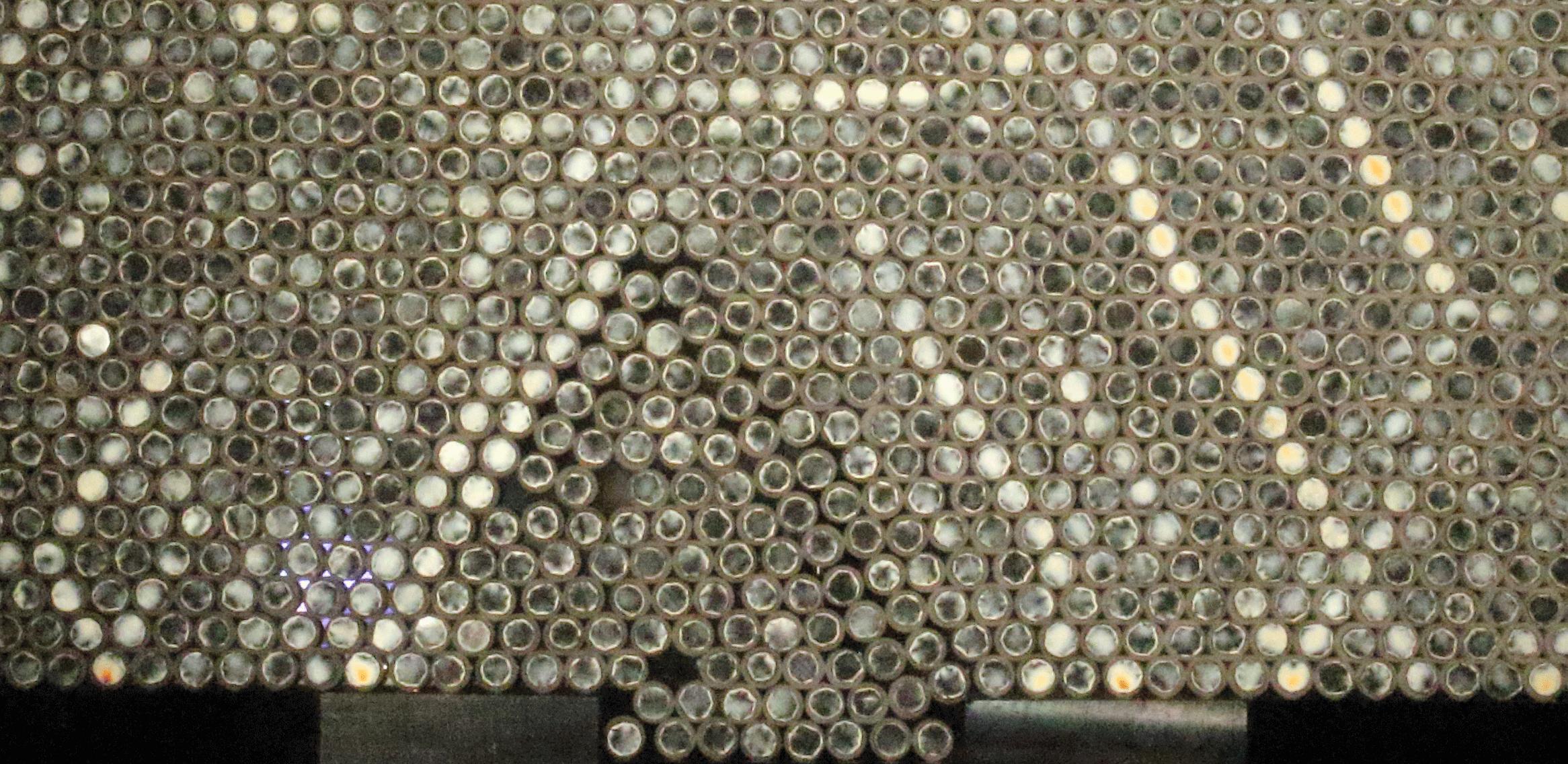Как я могу нумеровать круги в определенном порядке, используя python?
Я хочу получить значение оттенка каждого круга из изображения.
- Я пытаюсь обнаружить круги, используя
HoughCircle, - Я получаю центр каждого круга.
- Я положил текст (круг номера) в круг.
- Я установил подмножество пикселей, чтобы получить значения затенения и вычислить усредненные значения затенения.
- Я хочу получить результаты числа круга, координат центра и усредненных значений штриховки в формате CSV.
Но на третьем этапе номера кругов были назначены случайным образом. Так что так сложно найти номер круга.
Как я могу нумеровать круги в последовательности?
# USAGE
# python detect_circles.py --image images/simple.png
# import the necessary packages
import numpy as np
import argparse
import cv2
import csv
# define a funtion of ROI calculating the average value in specified sample size
def ROI(img,x,y,sample_size):
Each_circle=img[y-sample_size:y+sample_size, x-sample_size:x+sample_size]
average_values=np.mean(Each_circle)
return average_values
# open the csv file named circles_value
circles_values=open('circles_value.csv', 'w')
# construct the argument parser and parse the arguments
ap = argparse.ArgumentParser()
ap.add_argument("-i", "--image", required = True, help = "Path to the image")
args = vars(ap.parse_args())
# load the image, clone it for output, and then convert it to grayscale
image = cv2.imread(args["image"])
output = image.copy()
gray = cv2.cvtColor(image, cv2.COLOR_BGR2GRAY)
# detect circles in the image
circles = cv2.HoughCircles(gray, cv2.HOUGH_GRADIENT, 1.2,50, 100, 1, 1, 20, 30)
# ensure at least some circles were found
if circles is not None:
# convert the (x, y) coordinates and radius of the circles to integers
circles = np.round(circles[0, :]).astype("int")
number=1
font = cv2.FONT_HERSHEY_SIMPLEX
# loop over the (x, y) coordinates and radius of the circles
for (x, y, r) in circles:
# draw the circle in the output image, then draw a rectangle
# corresponding to the center of the circle
number=str(number)
cv2.circle(output, (x, y), r, (0, 255, 0), 4)
cv2.rectangle(output, (x - 10, y - 10), (x + 10, y + 10), (0, 128, 255), -1)
# number each circle, but its result shows irregular pattern
cv2.putText(output, number, (x,y), font,0.5,(0,0,0),2,cv2.LINE_AA)
# get the average value in specified sample size (20 x 20)
sample_average_value=ROI(output, x, y, 20)
# write the csv file with number, (x,y), and average pixel value
circles_values.write(number+','+str(x)+','+str(y)+','+str(sample_average_value)+'\n')
number=int(number)
number+=1
# show the output image
cv2.namedWindow("image", cv2.WINDOW_NORMAL)
cv2.imshow("image", output)
cv2.waitKey(0)
# close the csv file
circles_values.close()
2 ответа
Вы могли бы отсортировать свои круги на основе их x, y значения, ширина изображения и высота неровной линии, например:
import numpy as np
import argparse
import cv2
import csv
# define a funtion of ROI calculating the average value in specified sample size
def ROI(img,x,y,sample_size):
Each_circle=img[y-sample_size:y+sample_size, x-sample_size:x+sample_size]
average_values=np.mean(Each_circle)
return average_values
# open the csv file named circles_value
with open('circles_value.csv', 'wb') as circles_values:
csv_output = csv.writer(circles_values)
# construct the argument parser and parse the arguments
ap = argparse.ArgumentParser()
ap.add_argument("-i", "--image", required = True, help = "Path to the image")
args = vars(ap.parse_args())
# load the image, clone it for output, and then convert it to grayscale
image = cv2.imread(args["image"])
output = image.copy()
gray = cv2.cvtColor(image, cv2.COLOR_BGR2GRAY)
# detect circles in the image
circles = cv2.HoughCircles(gray, cv2.cv.CV_HOUGH_GRADIENT, 1.2,50, 100, 1, 1, 20, 30)
# ensure at least some circles were found
if circles is not None:
# convert the (x, y) coordinates and radius of the circles to integers
circles = np.round(circles[0, :]).astype("int")
font = cv2.FONT_HERSHEY_SIMPLEX
height = 40
# loop over the (x, y) coordinates and radius of the circles
for number, (x, y, r) in enumerate(sorted(circles, key=lambda v: v[0] + (v[1] / height) * image.shape[1]), start=1):
text = str(number)
(tw, th), bl = cv2.getTextSize(text, font, 0.5, 2) # So the text can be centred in the circle
tw /= 2
th = th / 2 + 2
# draw the circle in the output image, then draw a rectangle
# corresponding to the center of the circle
cv2.circle(output, (x, y), r, (0, 255, 0), 3)
cv2.rectangle(output, (x - tw, y - th), (x + tw, y + th), (0, 128, 255), -1)
# number each circle, centred in the rectangle
cv2.putText(output, text, (x-tw, y + bl), font, 0.5, (0,0,0), 2, cv2.CV_AA)
# get the average value in specified sample size (20 x 20)
sample_average_value = ROI(output, x, y, 20)
# write the csv file with number, (x,y), and average pixel value
csv_output.writerow([number, x, y, sample_average_value])
# show the output image
cv2.namedWindow("image", cv2.WINDOW_NORMAL)
cv2.imshow("image", output)
cv2.waitKey(0)
Кроме того, проще использовать библиотеку Python CSV для записи записей в ваш выходной файл. Таким образом, вам не нужно преобразовывать каждую запись в строку и добавлять запятые между каждой записью. enumerate() может использоваться для автоматического подсчета каждого круга. Также getTextSize() может использоваться для определения размеров текста, который будет напечатан, позволяя вам центрировать его в прямоугольнике.
Это даст вам следующий вывод:
И CSV, начинающийся как:
1,2,29,nan
2,51,19,nan
3,107,22,100.72437499999999
4,173,23,102.33291666666666
5,233,26,88.244791666666671
6,295,22,92.953541666666666
7,358,28,142.51625000000001
8,418,26,155.12875
9,484,31,127.02541666666667
10,547,25,112.57958333333333
Ошибка в вашем коде состоит в том, что ваш номер зависит от порядка кружков в list вернулся из cv2.HoughCircles который может быть случайным, так что я бы сделал в этой ситуации, чтобы разработать формулу, которая будет преобразовывать center(x, y) значение каждого круга для идентификатора, и тот же круг будет давать тот же идентификатор, если его центральное положение остается неизменным:
def get_id_from_center(x, y):
return x + y*50
for (x, y, r) in circles:
number = str(get_id_from_center(x, y))

